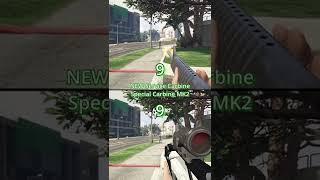
SMD Desoldering Tutorial in Hindi (Part - 7 of 10) #021 #india
Hello Engineers, Welcome to Electrobias.
where we dive into the fascinating world of electronics! In this comprehensive series,
we'll guide you through the intricate process of removing or desoldering SMD (Surface Mount Device) ICs.
Whether you're a beginner or a seasoned electronics enthusiast,
these step-by-step tutorials will equip you with the skills needed to tackle SMD ICs confidently.
Tools and Materials Needed:
1. Soldering iron with a fine tip
2. Desoldering braid (wick) or desoldering pump
3. Hot air rework station
4. Flux
5. Soldering iron stand
6. Tweezers
7. Isopropyl alcohol and a brush
8. Safety glasses and anti-static wrist strap
Step-by-Step Guide:
Preparation:
*/Safety First: Wear safety glasses and use an anti-static wrist strap to prevent damage to the IC and other components.
*/Workspace Setup: Ensure you have a clean and well-lit workspace. Place the PCB securely on a stand.
Desoldering Process:
*/Apply Flux: Apply a generous amount of flux around the TQFP-128 IC. This helps to improve heat transfer and makes it easier to remove solder.
*/Heat the IC: Use a hot air rework station to evenly heat the IC. Set the temperature between 300-350°C (572-662°F) and adjust the airflow to a medium setting. Move the nozzle in a circular motion around the IC to heat it evenly.
*/Check Solder Liquidity: After a few seconds, gently tap the pins with a tweezer to check if the solder has melted.
*/Remove the IC: Once the solder has melted, use tweezers to carefully lift the IC from the PCB. Be gentle to avoid damaging the PCB pads.
Cleaning the Pads:
*/Clean Excess Solder: Use a desoldering braid or pump to remove any excess solder from the PCB pads. Place the braid over the pads and gently press with a heated soldering iron until the solder is absorbed by the braid.
*/Clean with Isopropyl Alcohol: Dip a brush in isopropyl alcohol and clean the area around the pads to remove any flux residue.
Post-Desoldering:
*/Inspect the Pads: Carefully inspect the pads to ensure they are clean and undamaged. If any pads are lifted or damaged, you may need to repair them before soldering a new IC.
*/Final Cleaning: Give the area a final clean with isopropyl alcohol to ensure no contaminants are left behind.
Tips:
Practice: If you are new to desoldering, practice on a scrap PCB first.
Patience: Take your time and be patient. Rushing can lead to damaging the PCB or the IC.
Proper Ventilation: Work in a well-ventilated area to avoid inhaling fumes from solder and flux.
By following these steps carefully, you can successfully desolder TQFP-128 ICs without damaging the components or the PCB.
Contact us:
Prosanta Biswas - Hardware Design Engineer
Email: [email protected]
WhatsApp: +91 6291579068
Website: https://electrobias.com
Kolkata, West Bengal, India
where we dive into the fascinating world of electronics! In this comprehensive series,
we'll guide you through the intricate process of removing or desoldering SMD (Surface Mount Device) ICs.
Whether you're a beginner or a seasoned electronics enthusiast,
these step-by-step tutorials will equip you with the skills needed to tackle SMD ICs confidently.
Tools and Materials Needed:
1. Soldering iron with a fine tip
2. Desoldering braid (wick) or desoldering pump
3. Hot air rework station
4. Flux
5. Soldering iron stand
6. Tweezers
7. Isopropyl alcohol and a brush
8. Safety glasses and anti-static wrist strap
Step-by-Step Guide:
Preparation:
*/Safety First: Wear safety glasses and use an anti-static wrist strap to prevent damage to the IC and other components.
*/Workspace Setup: Ensure you have a clean and well-lit workspace. Place the PCB securely on a stand.
Desoldering Process:
*/Apply Flux: Apply a generous amount of flux around the TQFP-128 IC. This helps to improve heat transfer and makes it easier to remove solder.
*/Heat the IC: Use a hot air rework station to evenly heat the IC. Set the temperature between 300-350°C (572-662°F) and adjust the airflow to a medium setting. Move the nozzle in a circular motion around the IC to heat it evenly.
*/Check Solder Liquidity: After a few seconds, gently tap the pins with a tweezer to check if the solder has melted.
*/Remove the IC: Once the solder has melted, use tweezers to carefully lift the IC from the PCB. Be gentle to avoid damaging the PCB pads.
Cleaning the Pads:
*/Clean Excess Solder: Use a desoldering braid or pump to remove any excess solder from the PCB pads. Place the braid over the pads and gently press with a heated soldering iron until the solder is absorbed by the braid.
*/Clean with Isopropyl Alcohol: Dip a brush in isopropyl alcohol and clean the area around the pads to remove any flux residue.
Post-Desoldering:
*/Inspect the Pads: Carefully inspect the pads to ensure they are clean and undamaged. If any pads are lifted or damaged, you may need to repair them before soldering a new IC.
*/Final Cleaning: Give the area a final clean with isopropyl alcohol to ensure no contaminants are left behind.
Tips:
Practice: If you are new to desoldering, practice on a scrap PCB first.
Patience: Take your time and be patient. Rushing can lead to damaging the PCB or the IC.
Proper Ventilation: Work in a well-ventilated area to avoid inhaling fumes from solder and flux.
By following these steps carefully, you can successfully desolder TQFP-128 ICs without damaging the components or the PCB.
Contact us:
Prosanta Biswas - Hardware Design Engineer
Email: [email protected]
WhatsApp: +91 6291579068
Website: https://electrobias.com
Kolkata, West Bengal, India
Тэги:
#SMD_resistor_soldering_in_hindi #Soldering_in_hindi #SMD_soldering_in_hindi #SMD_resistor_desoldering_in_hindi #Desoldering_in_hindi #SMD_desoldering_in_hindi #Resistor_ko_keise_desolder_kare #How_to_desolder_SMD_resistor #How_to_desolder_in_hindi #PCB_repairing #Hindi_mai_soldering #Hindi_mai_desoldering #Soldering_iron #Hot_air_gun #Resistor_remove #Resistor_remove_in_hindi #Technician #Electronics #PCB #SMD #Group_resistor_desoldering #Group_resistor_soldering #ElectrobiasКомментарии:
บีบีกันอัดแก๊ส ARMY R612 EMG Staccato C2 2011 VIP Grip BB GUN
BB GUN INFINITY ร้านบีบีกันอินฟินิตี้
Meet Christopher Cappellini, DO, Vascular Surgeon
Hackensack Meridian Health
up to faster 154. parison
raiden 07. mix
15 11 2024 রাশিফল শ্রীলাল
purnima tv
外国人バイク乗りが日本の虜になってしまった|外国人夫婦の日本縦断バイク旅 17日目【北海道】
Ori & Kaito


























